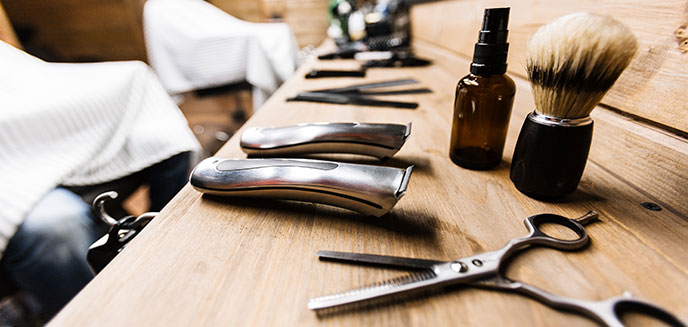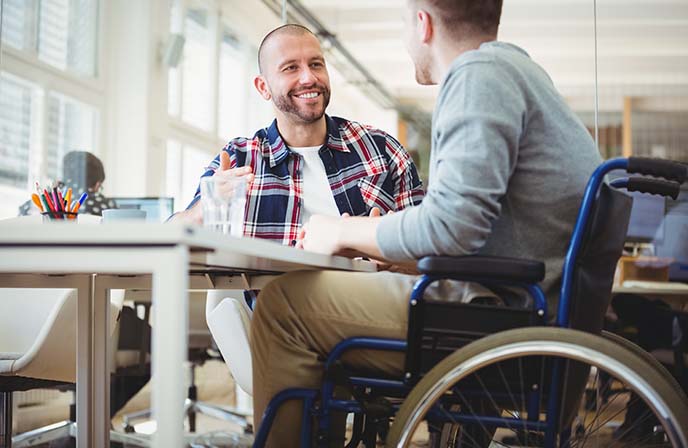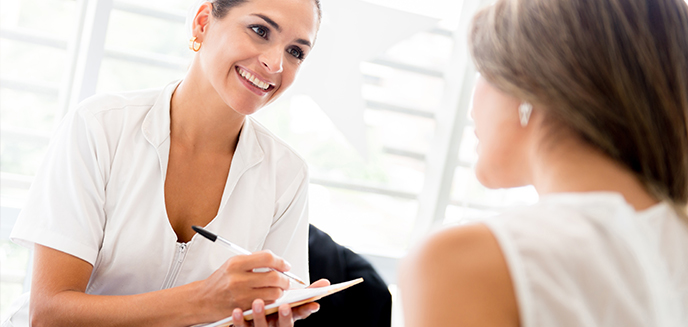According to disability charity, Scope, 13.9 million people in the UK live with a disability. Many people who are registered disabled and want to use salons and barbershops can feel the service inaccessible. In some circumstances, a simple haircut can be a stressful experience for someone with cognitive or physical disabilities.
Good practice requires a salon or barbershop to foster/encourage inclusivity within the business and contemplate what reasonable adjustments are needed to remove barriers to disabled people in using its services.
Some of the barriers disabled clients may experience are no wheelchair access and challenges navigating backwash areas. Also, excessive noise or bright lighting can be stressful for clients with autism or high anxiety levels.
This blog post covers:
- What’s in it for you
- Tips to make your salon or barbershop disability friendly
- Wheelchair access
- Backwash and cutting areas
- Communication
- Staff training
- Customer service
- Checklist

What's in it for you
The Disability Discrimination Act (DDA), which came into effect in 1995, is intended to reduce the discrimination faced by many disabled people. Part three of the act requires service providers to ensure they are providing accessible goods, facilities and services (GF&S) to their customers. All businesses are required to make 'reasonable adjustments to their GF&S’ for their customers.
People with disabilities don't always have access to the same opportunities as everyone else. The best thing a salon or barbershop can do is make it known that they can make accommodations for clients with a disability. Being a disability-friendly business can be a massive benefit; it shows your business is welcoming and diverse and has the potential to attract new clients with such a reputation.
A recent estimate put people with a disability collective spending power at more than £50 billion a year.
Clients with disabilities often choose to book with a mobile hair and beauty professional for convenience, as they may not be aware of disability-friendly salons or barbershops in their area.
Clients are often willing to pay for the experience and luxury of going out for a treatment or service.
Here are some tips and ideas you may want to reflect on making your salon disability-friendly:
Don't make assumptions; instead, assess the clients' situation and consider any reasonable adjustments that could be made to reduce any risks. As a hair and beauty business owner, your duty is not to discriminate and, where appropriate, take on board the disabled person's views. Examples of good practice include considering:
- Door widths and access points,
- Permanent or temporary ramps
- Signage, salon literature such as price lists that are disability-friendly
- Décor and furniture – contrasting décor, clear entrances, exits, walkways
Wheelchair access
If access to your salon or barbershop requires stairs, consider installing a ramp and handrails to allow wheelchair or walking stick users to enter your premises. If your salon or barbershop is up a flight of stairs, consider installing a stairlift if budget allows.

Don't assume a client needs/wants accommodations if they have an obvious disability. Never control a client's wheelchair or presume they can't do something. By just being consciously aware of the situation, the clients who need extra accommodations or assistance will ask.
Backwash and cutting areas
Clients with sensitivity issues may find it uncomfortable under bright lights. If your salon's backwash area is under bright light, consider having a lighting system with the functionality to dim the brightness. If music is on in the background, ask if the volume levels are okay for them. Be aware that shampooing a client's hair with a disability can be extremely painful because it puts their body in an unnatural position. Consider getting a portable shampoo bowl to accommodate those clients that may find it challenging to use the fixed backwash area or fit in an additionally lowered basin so hair could be comfortably washed.
Remember - Front wash basins or a purpose-designed neck rest cushion or pad must be used when washing a client's hair.
The small touches can make a whole lot of difference. Consider having heavy or weighted capes/blankets to help some clients feel safe and relaxed.
Communication
Maintaining good communication is vital throughout the service or treatment. Ensure you complete a thorough consultation (all the information you need for consultations is in our NHBF consultation, allergy alert and industry tests toolkit for hair salons and barbershops free to NHBF Members (£4.50 P&P).

Before you start the treatment or service, don’t be nervous about asking questions. It is important that your client feels you understand their disability. The client is the only person who can tell you, so don't assume anything. This will enable you to manage expectations and both plans and agree on the treatment and service to be completed, therefore avoiding any misunderstanding or disappointment. If a client's disability affects you from doing your job, then you do have the right to ask for tactics to accommodate.
For some people making a decision can be difficult, which then can cause anxiety. Keep a picture stylebook to stimulate ideas and perhaps suggest for them?
But be mindful that not everyone wants to talk, so avoid small talk or keep it to the absolute minimum and not pushing a conversation that isn't happening.
Staff training
The Best practice is all hair and beauty businesses should have inclusion and equality training to make staff more aware of the different disabilities that clients may have and how to adopt disability-friendly practices. Why not look at a quick sign language course for clients who may be hard of hearing?
It's against the law to discriminate against disabled employees. Funding is available to support disabled people in employment, and disabled employees can prove very loyal and stable in a fluid jobs market.
Customer service
Your disabled client should feel like their experience in your salon or barbershop is a normal part of life and not have their disability highlighted. Treat every client as an individual and give them the best customer experience while using your service. Ensure that their visit to your salon or barbershop feels as normal as possible.
Checklist
- Don't make assumptions; instead, assess the clients' situation and consider reasonable adjustments to reduce any risks.
- Installing a ramp and handrails to allow wheelchair users or unstable walkers to enter your premises.
- Consider getting a portable shampoo bowl or fit in a lowered basin so hair could be comfortably washed.
- Fix a lighting system with the functionality to dim the brightness.
- Do a consultation but avoid small talk or keep it to the absolute minimum.
- Train your staff.
- Treat every customer as an individual and give them the best customer experience.
You may also be interested in...
Need help with health & safety in your salon or barbershop? NHBF Members benefit from a comprehensive range of support and advice, including access to our free helpline and a generous discount on our comprehensive health and safety toolkits.
